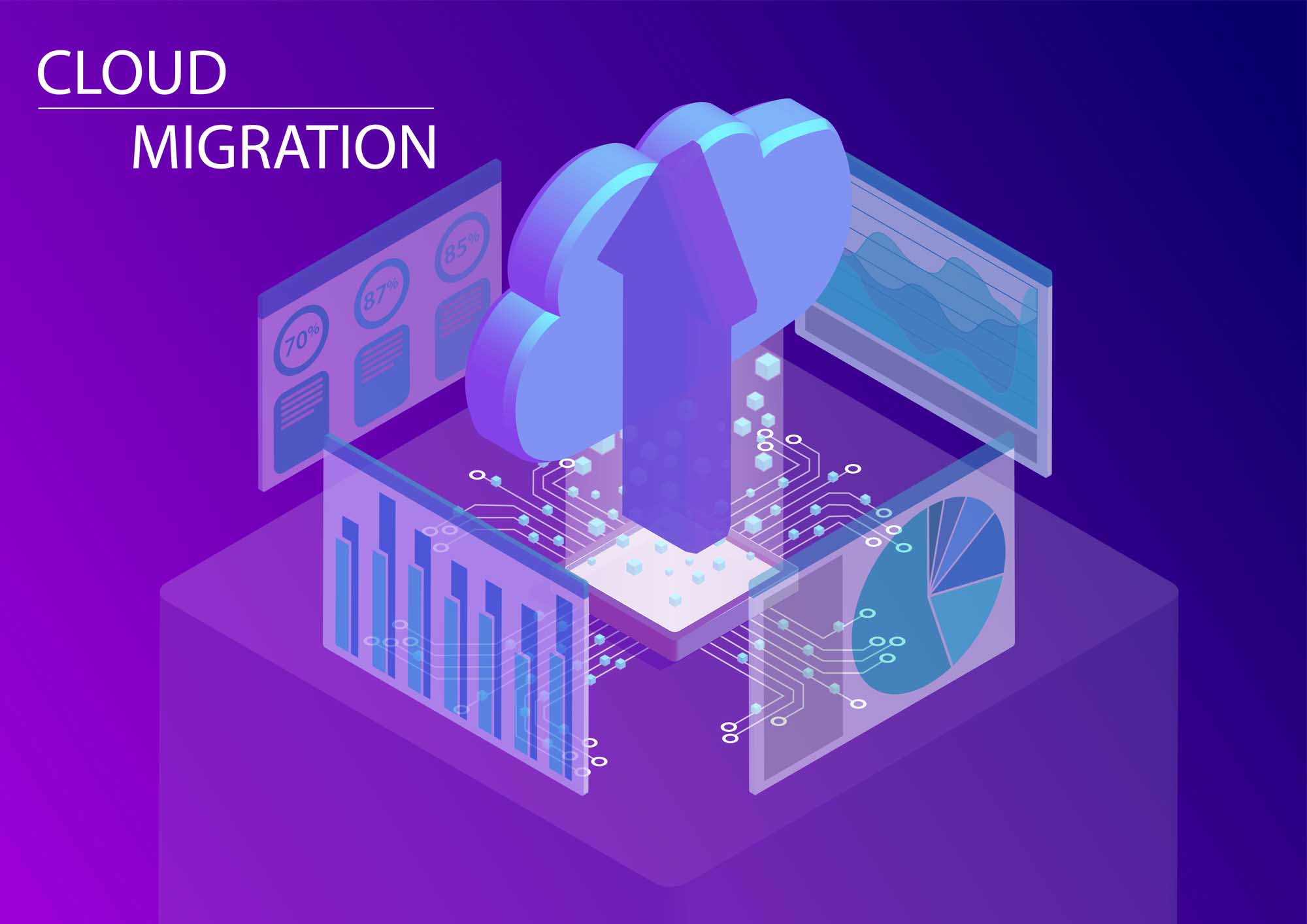You might be surprised to learn that the average data breach costs businesses $4.4 million. Even a single incident can derail your operations and be impossible to recover from.
The good news is there are steps you can take to keep your data properly secured. Establishing a cloud migration project plan is one of the most notable.
For many entrepreneurs, developing the right cloud migration project plan can seem overwhelming at first. We’ve written a brief guide on the benefits of doing so and how you can get started. Let’s explore what you should keep in mind.
What Is Cloud Migration?
As the name implies, this process involves transporting your data to cloud servers from other locations. For instance, let’s assume you keep all of your organization’s data on company computers and external hard drives.
Cloud migration would require you to copy this data to your company’s IT infrastructure. It’s imperative to develop comprehensive migration planning before moving forward. This minimizes many complications you would’ve had to deal with.
What Are the Types of Cloud Migration Project Plans?
There are various cloud migration project plans & strategies you can use to transfer your data. Six stand out from the rest, and it’s essential to know how they can potentially help your company. Let’s take a closer look.
1. Replatforming
The core foundation of your data management strategy will stay the same in this scenario. In context, it involves making adjustments to optimize your data landscape for the transition to the cloud. It’s suitable for companies of all types, even those that don’t have existing cloud infrastructure.
2. Repurchasing
When repurchasing a cloud-based server, a SaaS platform is often used. One of the major challenges associated with this method is training your team to use the new system.
The code that was previously used will no longer be relevant, so there’s a bit of a learning curve. Working with a professional can help you make the necessary adjustments and minimize downtime.
3. Rehosting
This is the simplest way you can migrate your data to the cloud. When doing so, you’ll transport a full copy of your data to your new cloud-based platform. Rehosting is best for businesses that don’t have plans for a long-term cloud strategy.
4. Refactoring
This term refers to rebuilding your applications from scratch. Refactoring is most appropriate when you need a cloud infrastructure that offers unique capabilities.
The same can be said when your current system doesn’t meet your needs. For instance, your company might need to leverage cloud auto-scaling but have no opportunity to do so.
It’s worth noting that refactoring is often the most expensive option available. However, it’s also the most compatible with future versions of your cloud architecture.
5. Retiring
As time passes, you’ll discover that some applications no longer meet your needs. You should retire these programs in this case, as they’ll cause unnecessary clutter in your workflow.
They could even lead to additional expenses. You can invest the money you save from retiring into other areas of your business.
6. Retaining
This strategy often catches people off guard, as it involves avoiding cloud migration for the moment. Some companies aren’t ready to move forward, while others could run into compliance issues by migrating to the cloud. Regardless, retaining is sometimes the best option for your situation.
Cloud Migration Project Plan Benefits
There’s no shortage of benefits that come with developing a cloud migration project plan, and it’s crucial to understand these so you can leverage them. Otherwise, you’ll have difficulty making the most of this process. Let’s explore the most notable below.
Cost Reduction
When you map out your cloud migration project plan, you can minimize the amount of money you spend. It’s best to delay your cloud migration project plan until you’ve developed a comprehensive plan. This allows you to accurately estimate your expenses.
Scalability
Cloud-based data is notably scalable. You can adjust your level of service as needed to ensure you’re always able to meet your needs.
Creating a strong cloud migration project plan can help you anticipate your needs. You can then act preemptively to streamline the required changes.
Agility
To avoid issues as time passes, you’ll need to implement agile data management. This term refers to having the ability to navigate issues you encounter.
Without the right level of agility, you risk experiencing downtime when dealing with issues. This can quickly derail your operations and lead to numerous other issues. For instance, imagine if downtime impacted your customer satisfaction.
They could turn to a competitor instead. In situations like these, people who choose other companies are unlikely to return to yours.
Reliability
This is one of the most important benefits to consider about cloud migration project plans. Many managed provider firms offer service-level agreements (SLAs) that guarantee a certain amount of uptime throughout your contract. If these terms are breached, certain clauses will come into effect.
For instance, it’s not uncommon for providers to offer discounts on future services if they don’t adhere to their SLA. In some cases, they could allow their clients to get out of their contracts early.
Cloud Migration Project Plan Challenges
Despite the many benefits cloud migration provides, there are many challenges to overcome. Preparing for them will ensure you handle them seamlessly. Below are the ones you should consider before moving forward.
Adoption Resistance
Many people (employees and executives alike) prefer to handle data the way they’ve always handled it. They might resist the change to a cloud-based data management policy.
If this occurs on a widespread scale, it could cause significant setbacks for your company. Informing your workers ahead of time can help make this change easier for them to accommodate.
You could also provide training and resources to answer questions or concerns they may have. The better you anticipate adoption resistance, the easier you’ll navigate it.
Cost
It’s no secret that migrating your data to a cloud server can be costly. Some companies don’t have large enough budgets to make this a practical option.
Without the right measures in place, cloud migration projet plans can far exceed your budget. This is true even for plans like rehosting and replatforming. Companies that handle large amounts of data can expect to pay more than those that don’t.
Security Concerns
There are numerous security concerns associated with cloud migration. The cybercrime industry is estimated to cost the world over $10 trillion per year by the end of 2025. Much of this value will stem from the sensitive data hackers steal from businesses.
Since cloud-based data is less secure than offline data, they often target cloud databases. For this reason, many organizations are hesitant to make the shift.
As previously mentioned, even a single data breach can have disastrous consequences. Damage to your company’s reputation is one of the most notable.
A perfect example is the 2017 Equifax data breach. Due to lax security measures, hackers were to compromise sensitive customer information and wreak havoc.
The company’s reputation never fully recovered, and they even had to deal with a multimillion-dollar lawsuit. If a company this large wasn’t able to brush off a security breach, chances are your company won’t either.
Management Issues
Cloud-based data can be difficult to manage without the proper training. This requires additional resources, and your company might not be able to accommodate training after the transition. However, it’s something you can’t overlook when making this change.
Management is something you can never neglect, as making mistakes leads to major consequences. To clarify, poor management can make data breaches more likely to occur.
Starting Your Cloud Migration Project Plan
It’s essential to work with a professional when developing your plan. This will help ensure you get started on the right track and avoid potential obstacles.
When looking for managed IT services, it’s essential to consider their past reputation. This will play a large role in the results you get from them.
A simple Google search can often tell you everything you need to know, as you’ll have access to their customer reviews. Look for feedback that mentions professionalism, reliability, and timeliness.
It’s best to find brands that have client testimonials, as well. These are more in-depth than conventional reviews and offer a detailed look at what they’re capable of.
Pricing is also important to consider. Never choose the cheapest professionals you encounter for cloud migration project plans, as they’re likely to fall short of your goals. You should also stay away from the most expensive providers.
There’s a point of diminishing returns on what you budget for with cloud migration project plans, and you won’t always get better results by spending more. Somewhere in the middle of the industry’s price range can meet your needs without requiring you to overspend. With enough due diligence, you shouldn’t have an issue finding the best choice for your needs.
Get Started ASAP
Once you see an opportunity to implement a cloud migration project plan, you should do so as soon as possible. The information in this guide will help ensure you get started on the right track. From here, you should have no trouble avoiding obstacles.
Vertical IT Solutions helps small to medium businesses that need tailored IT support. We aim to optimize technology infrastructure and provide scalable solutions for business growth. You’ll learn more about what we can do when you book a consultation today for your cloud migration project plan.



